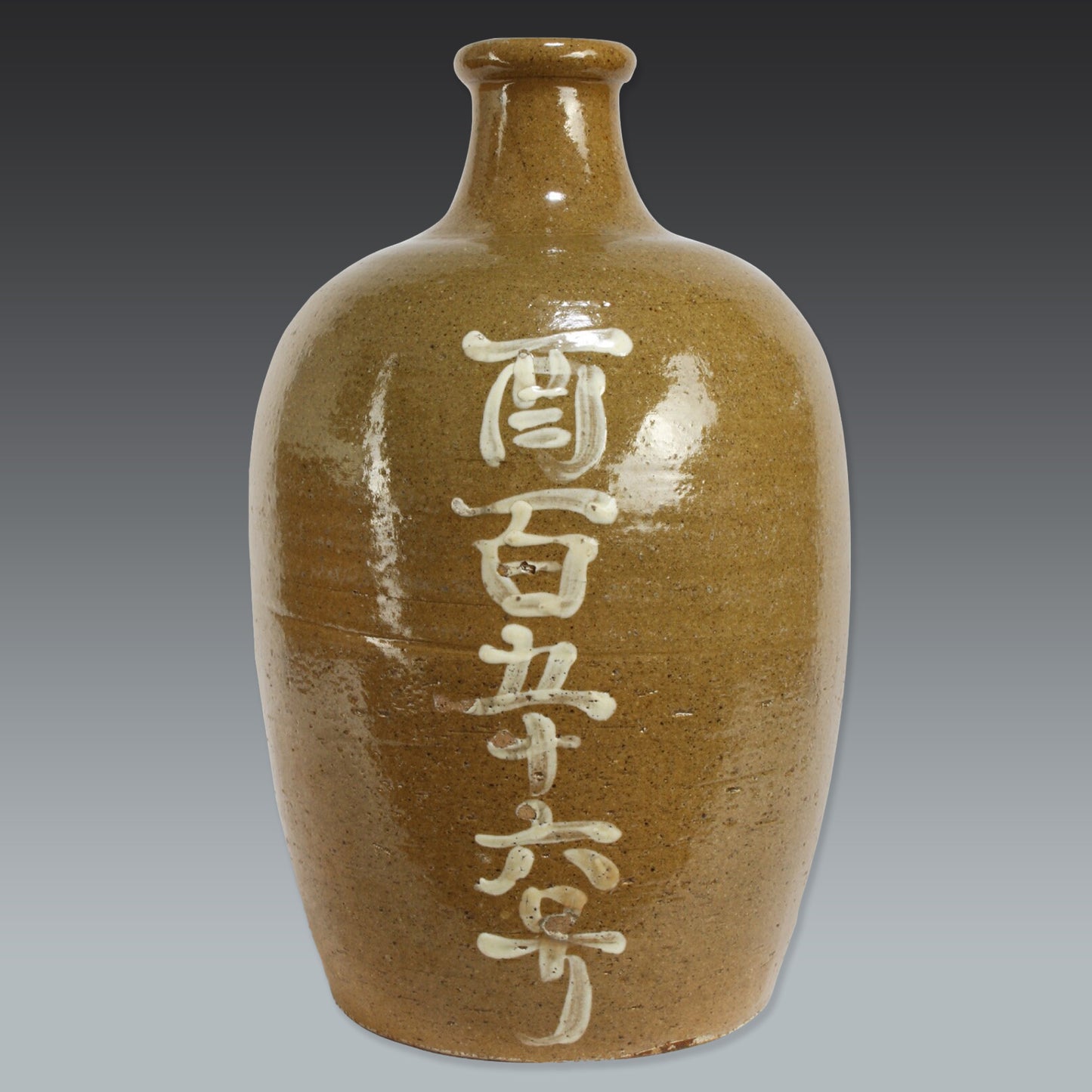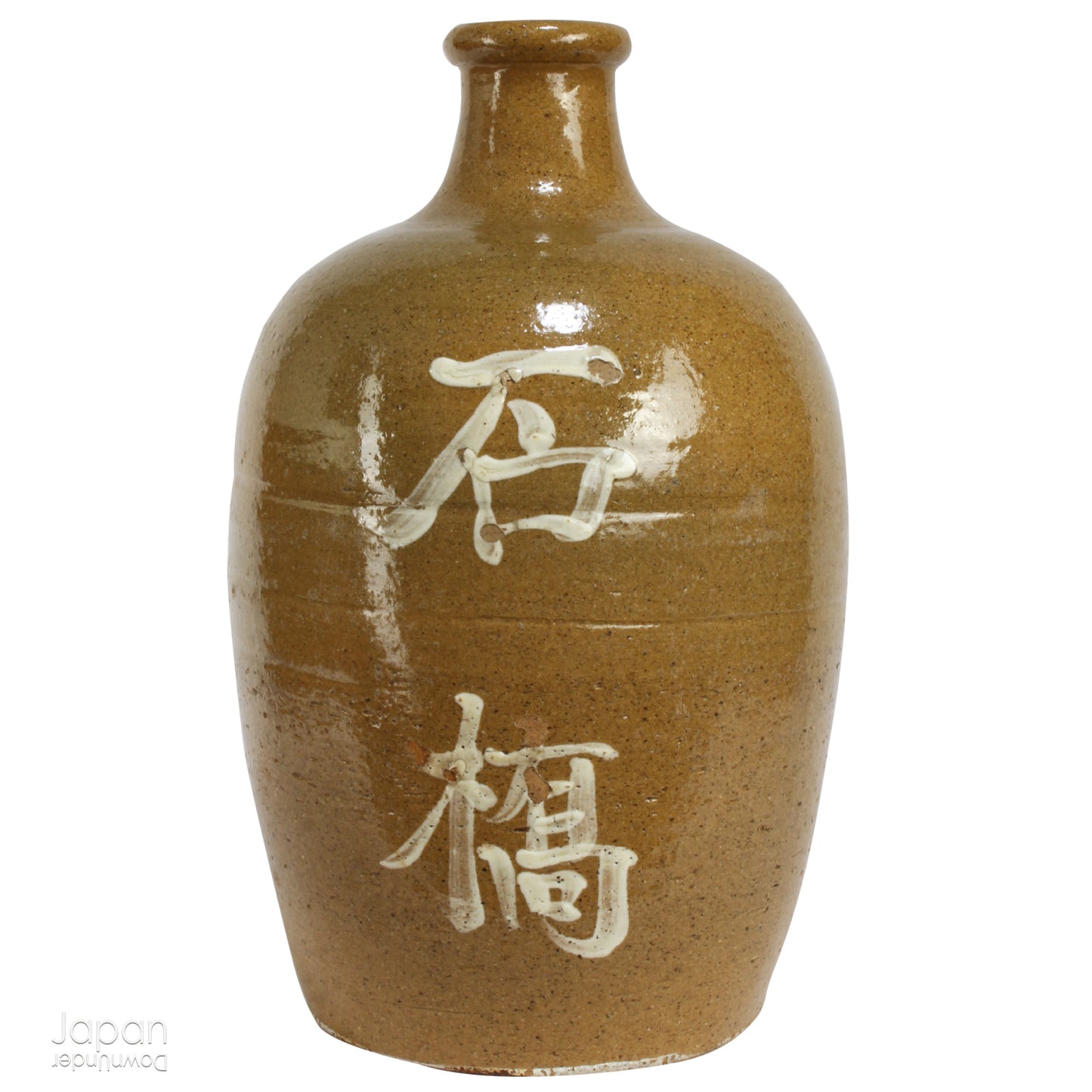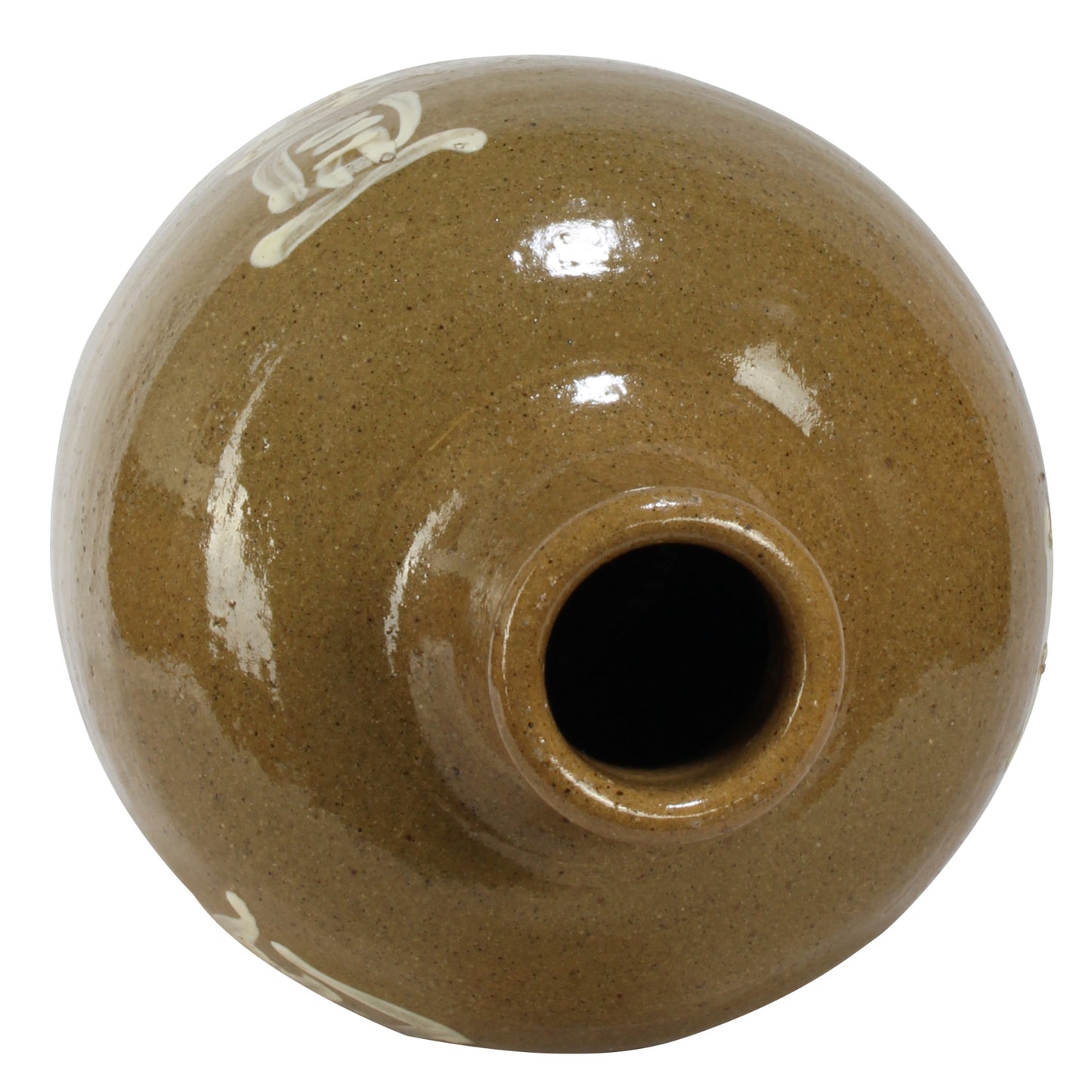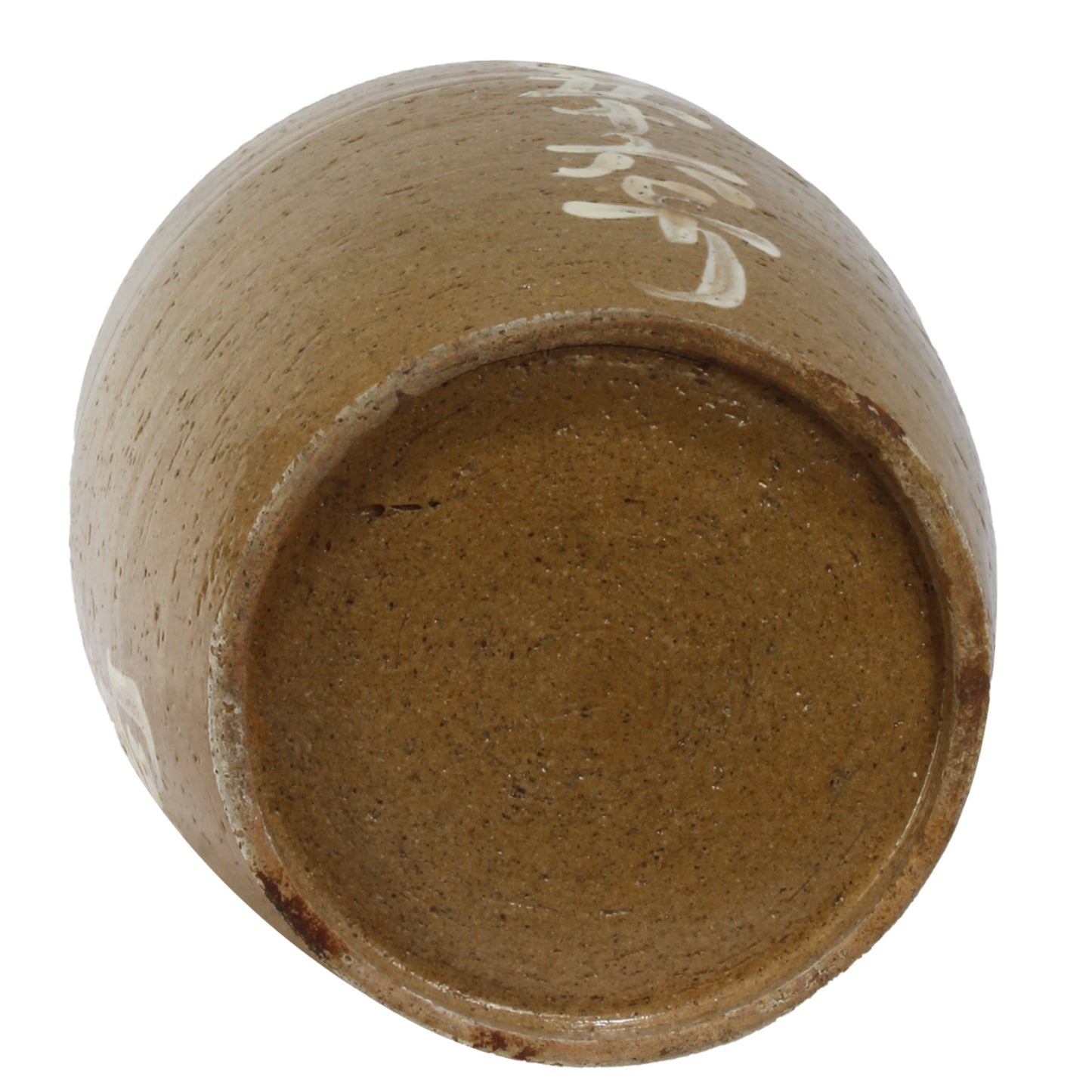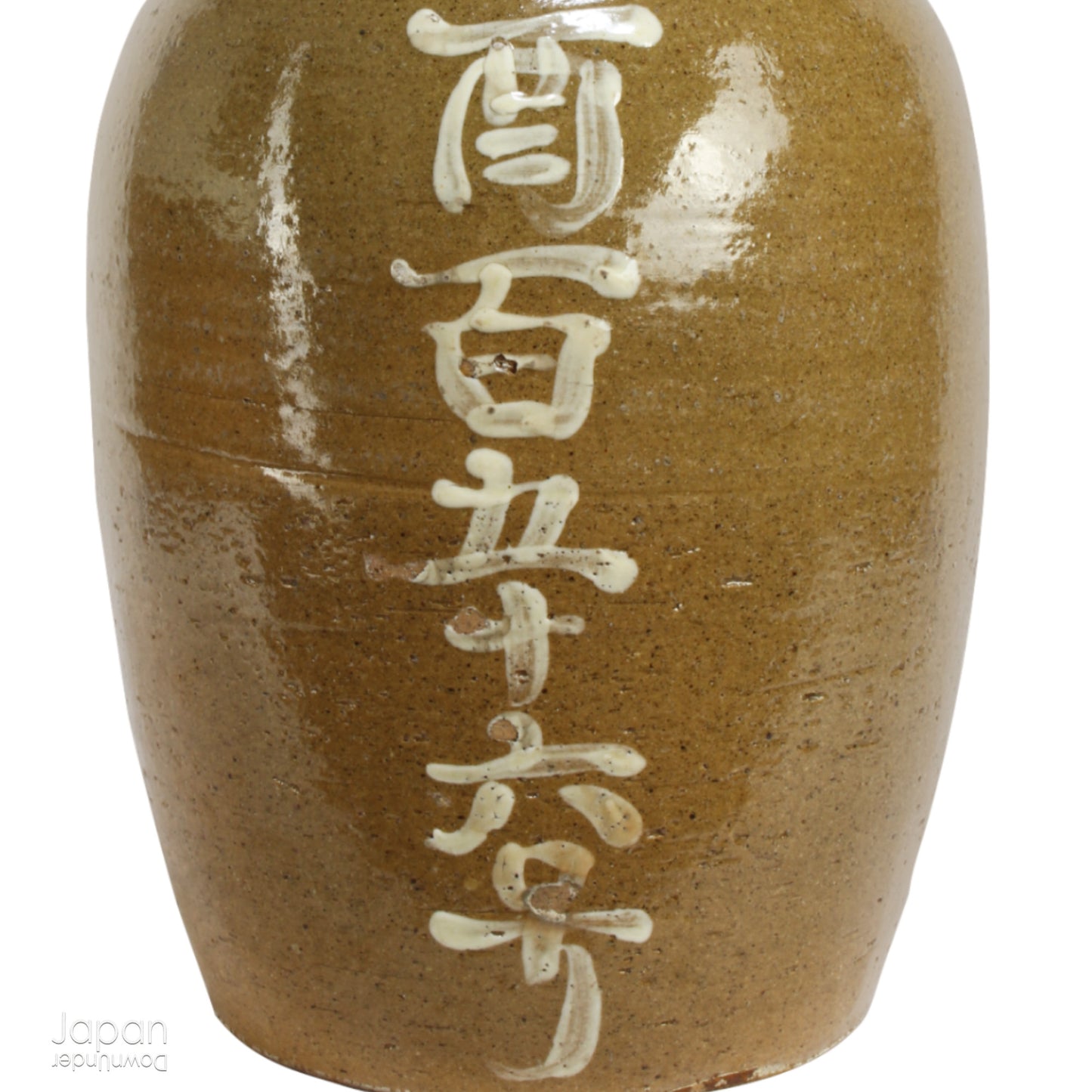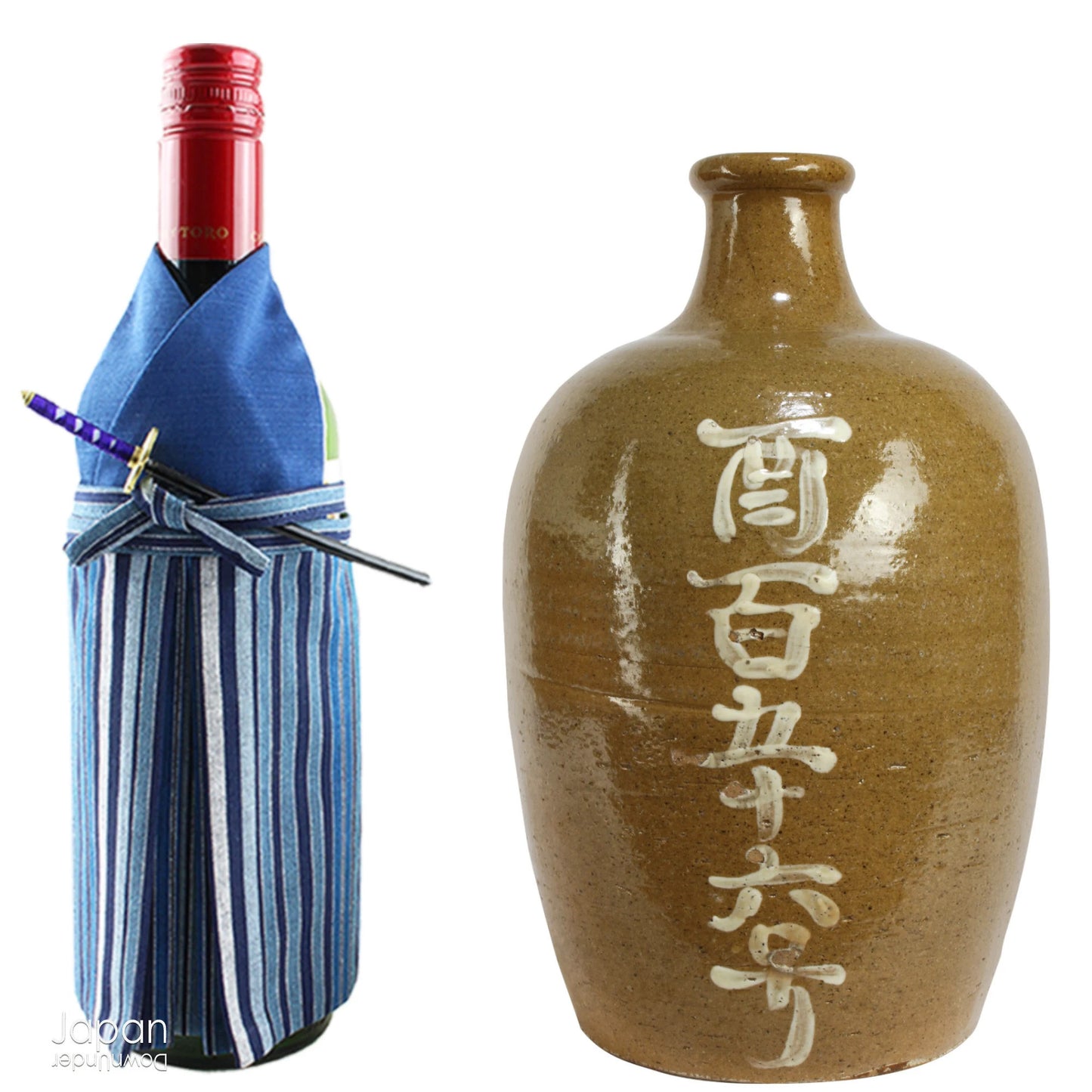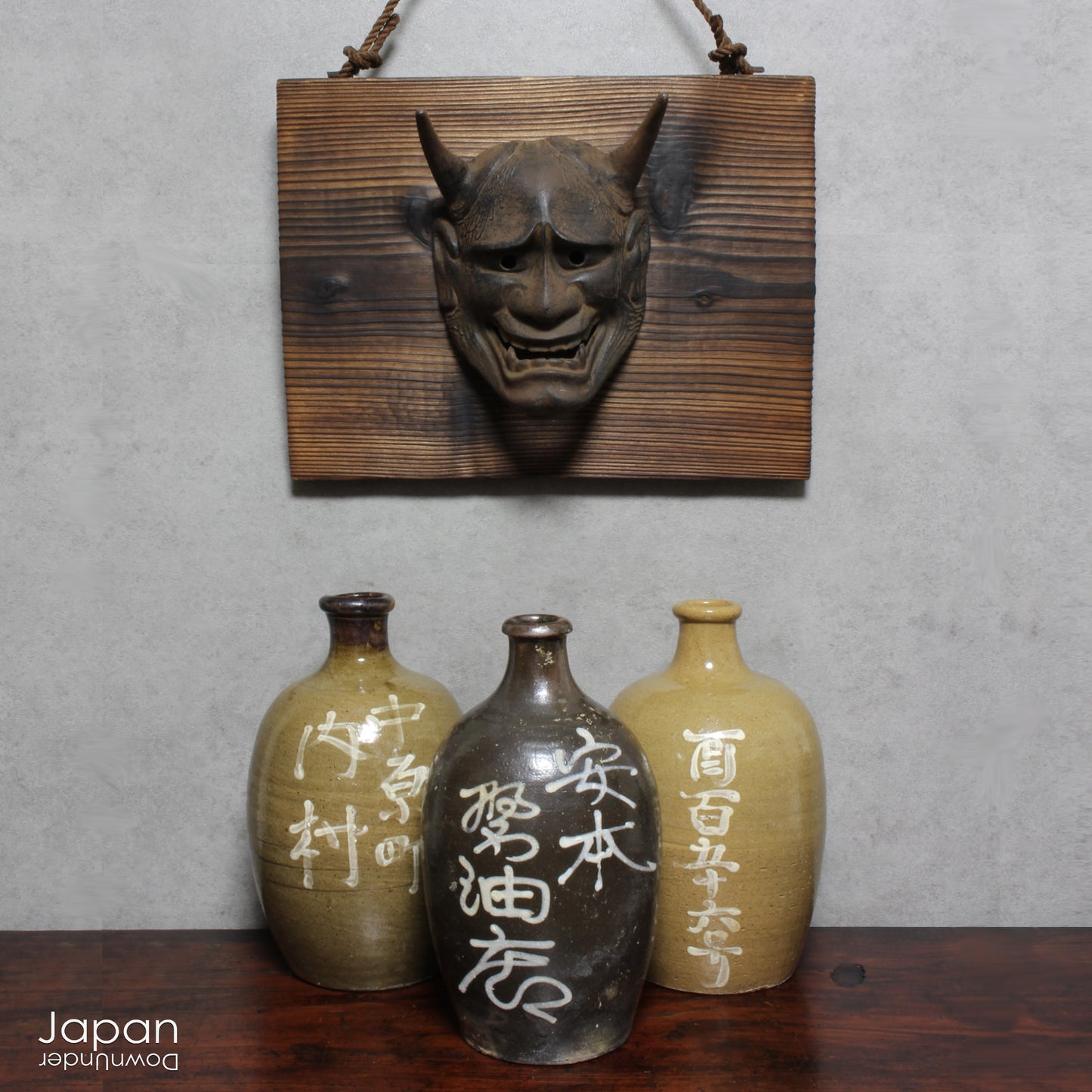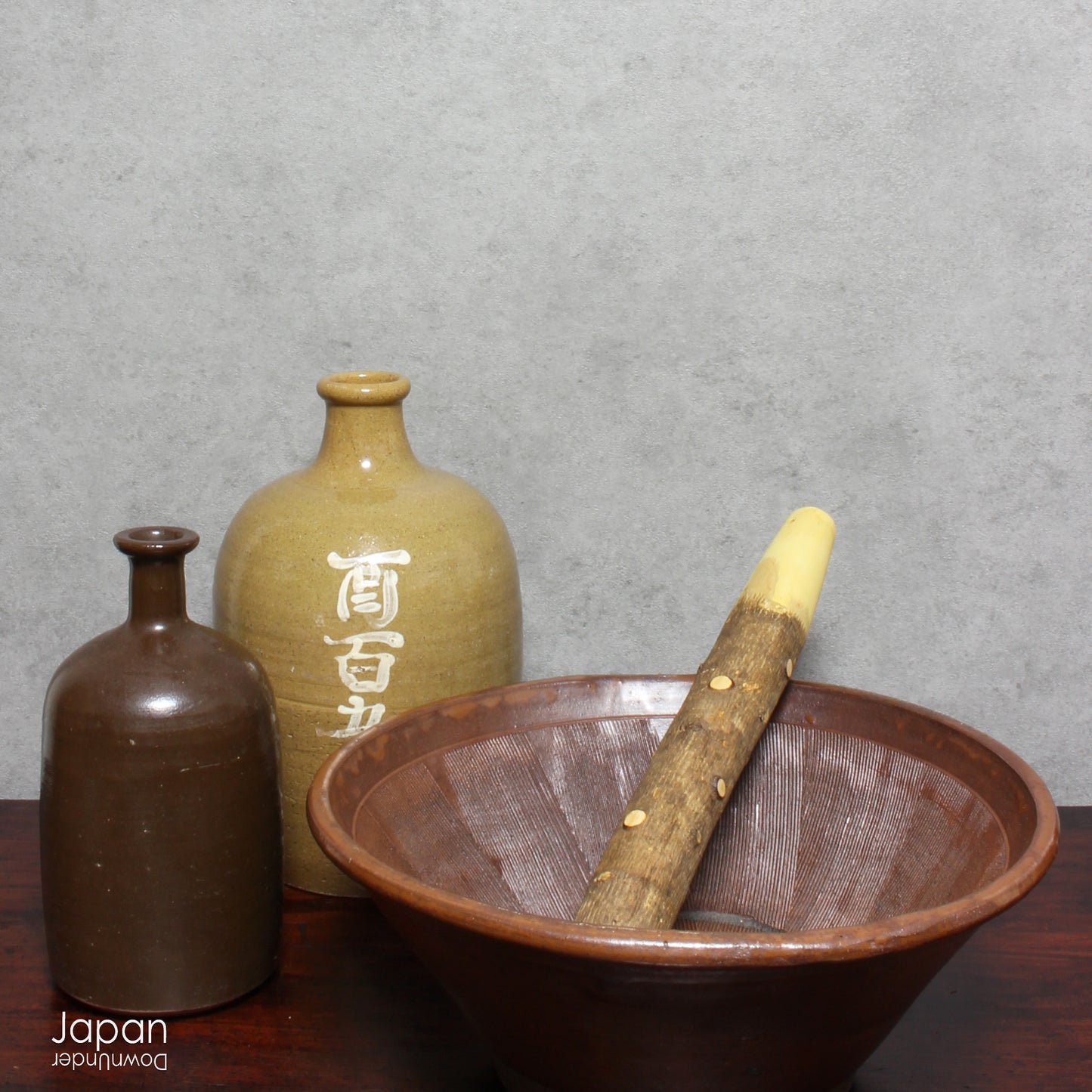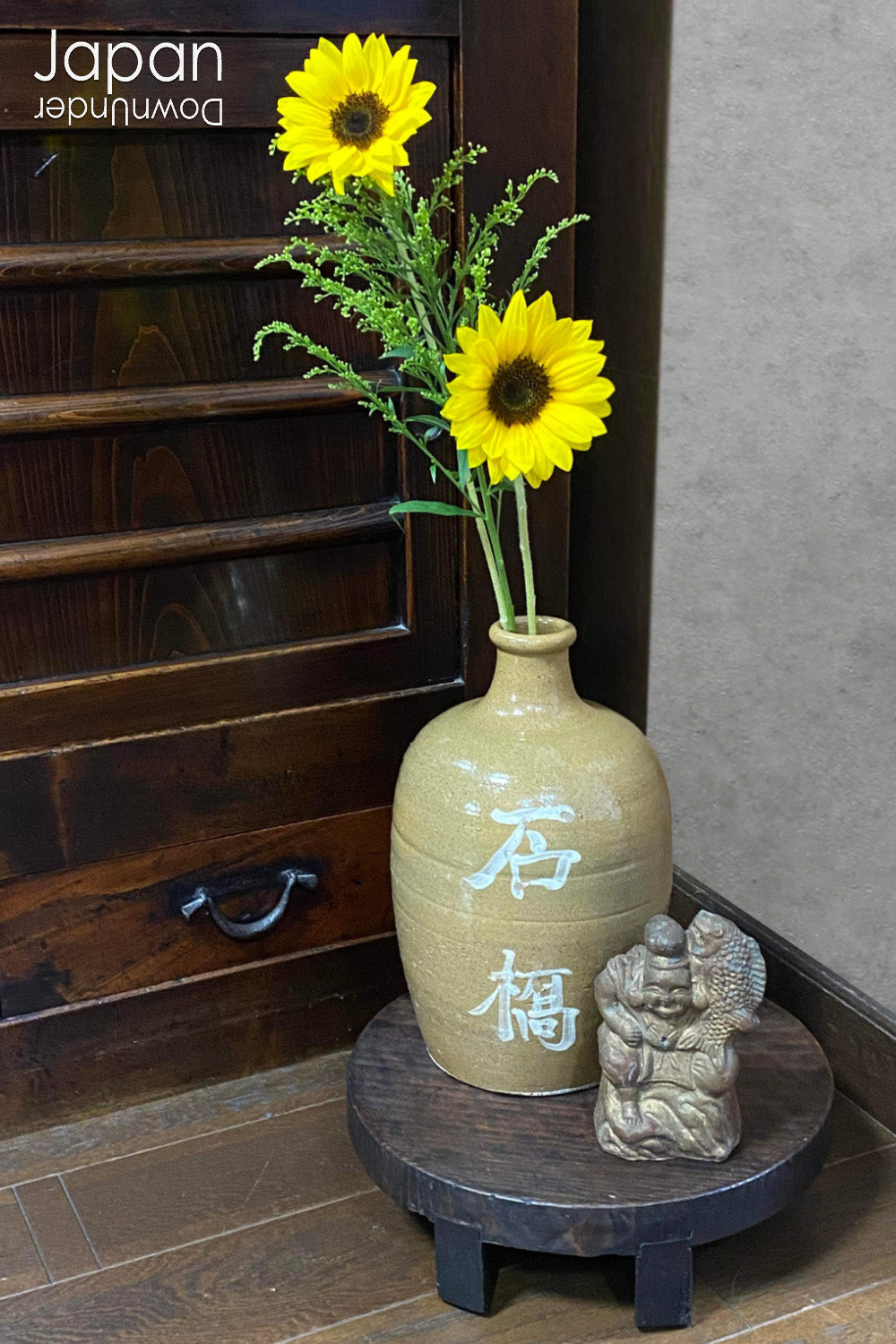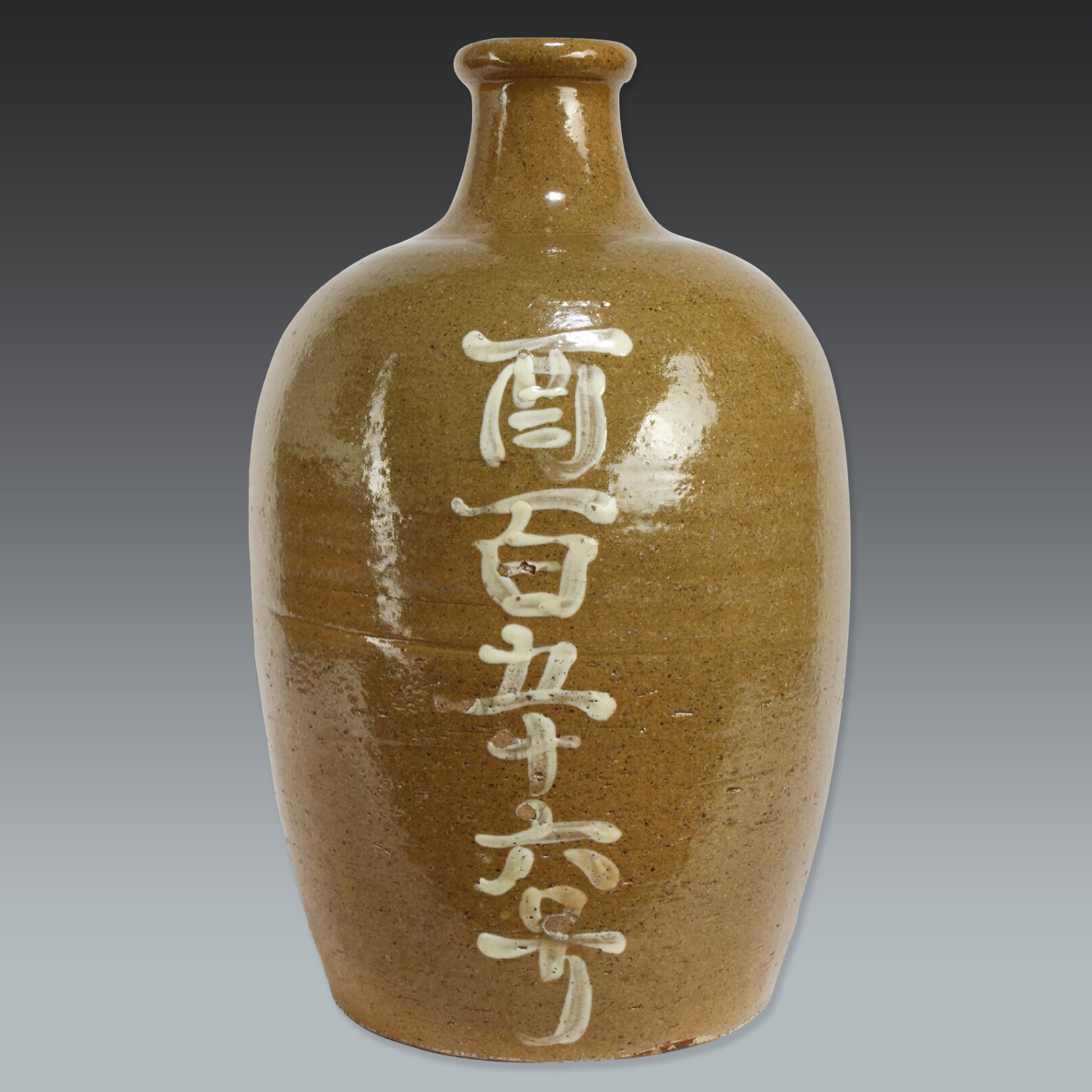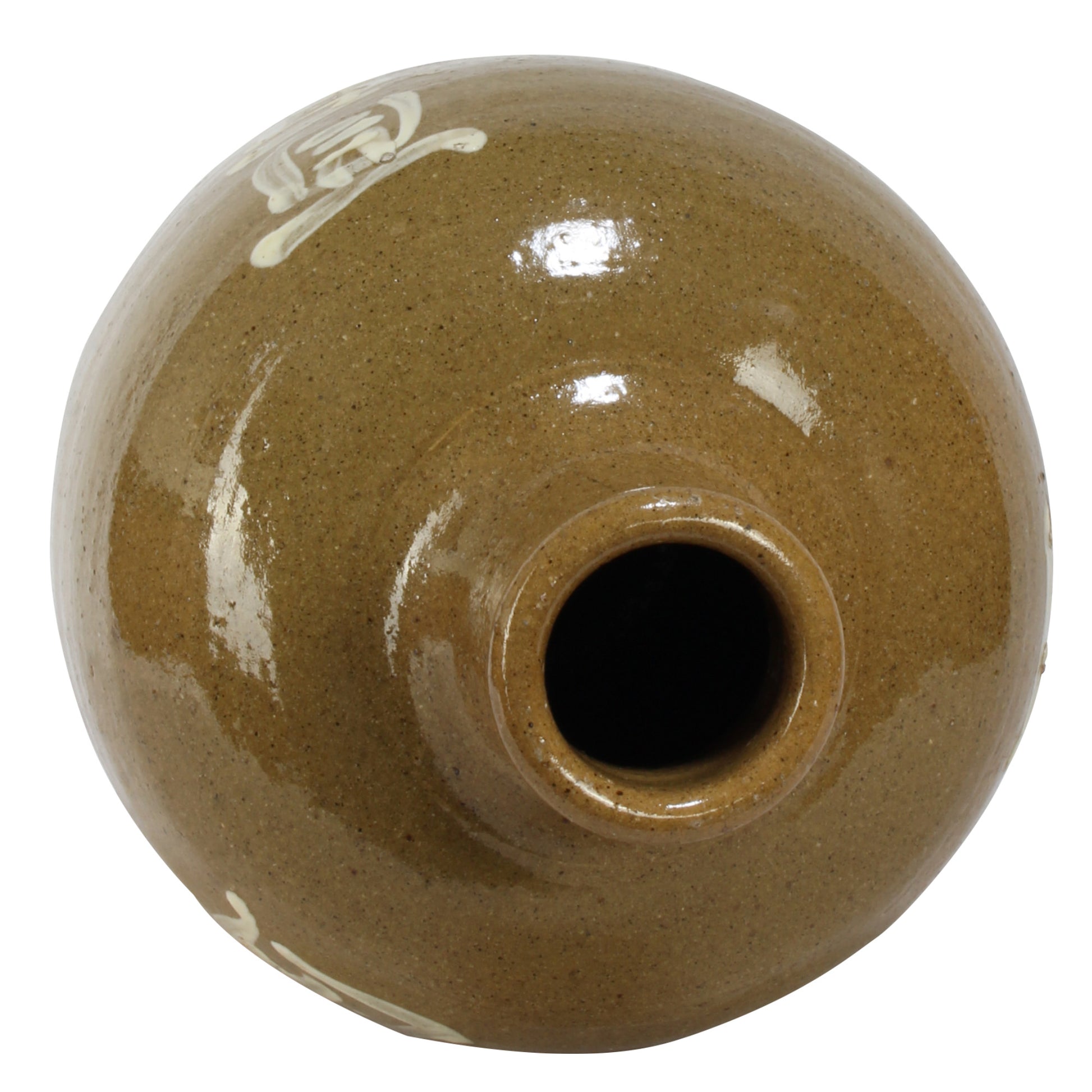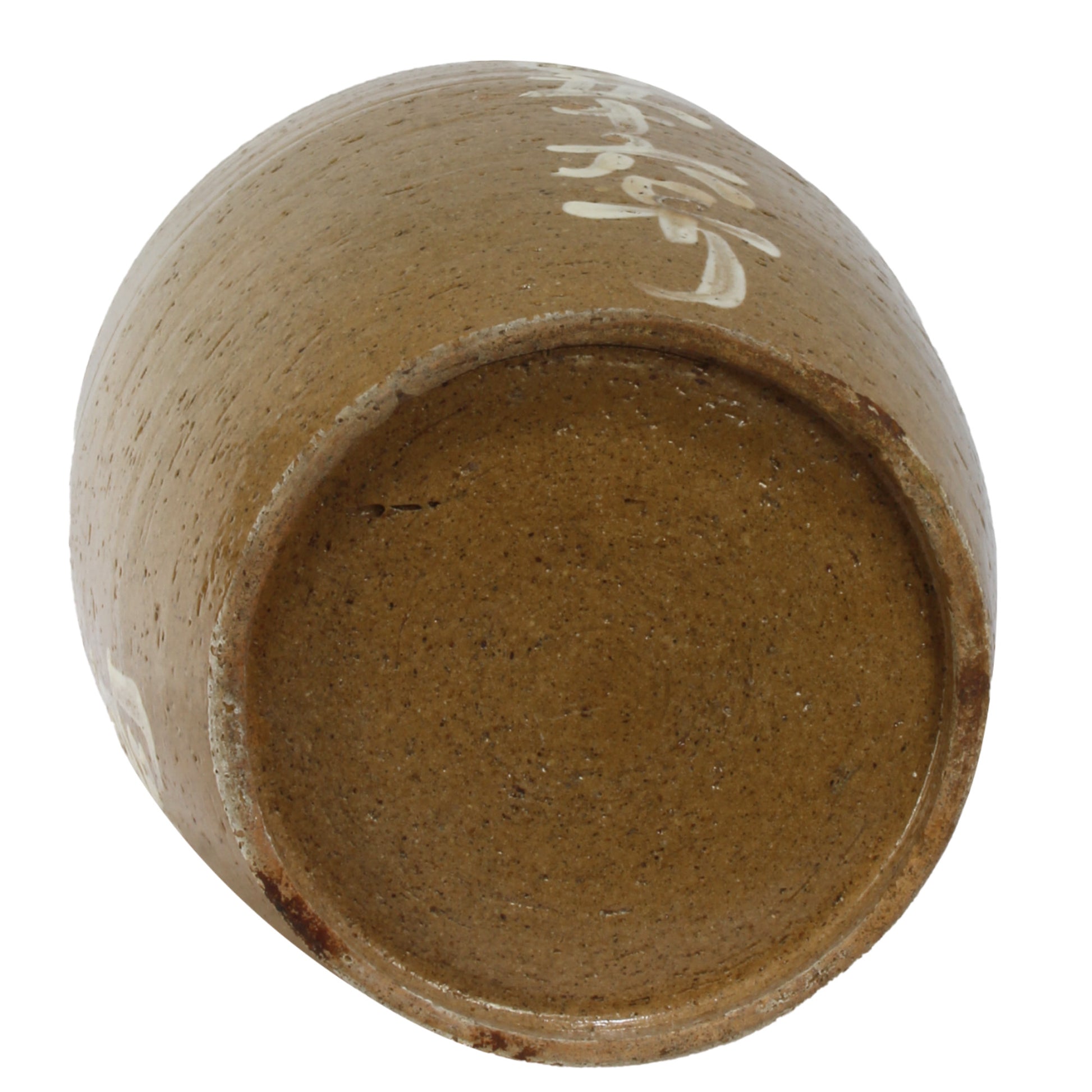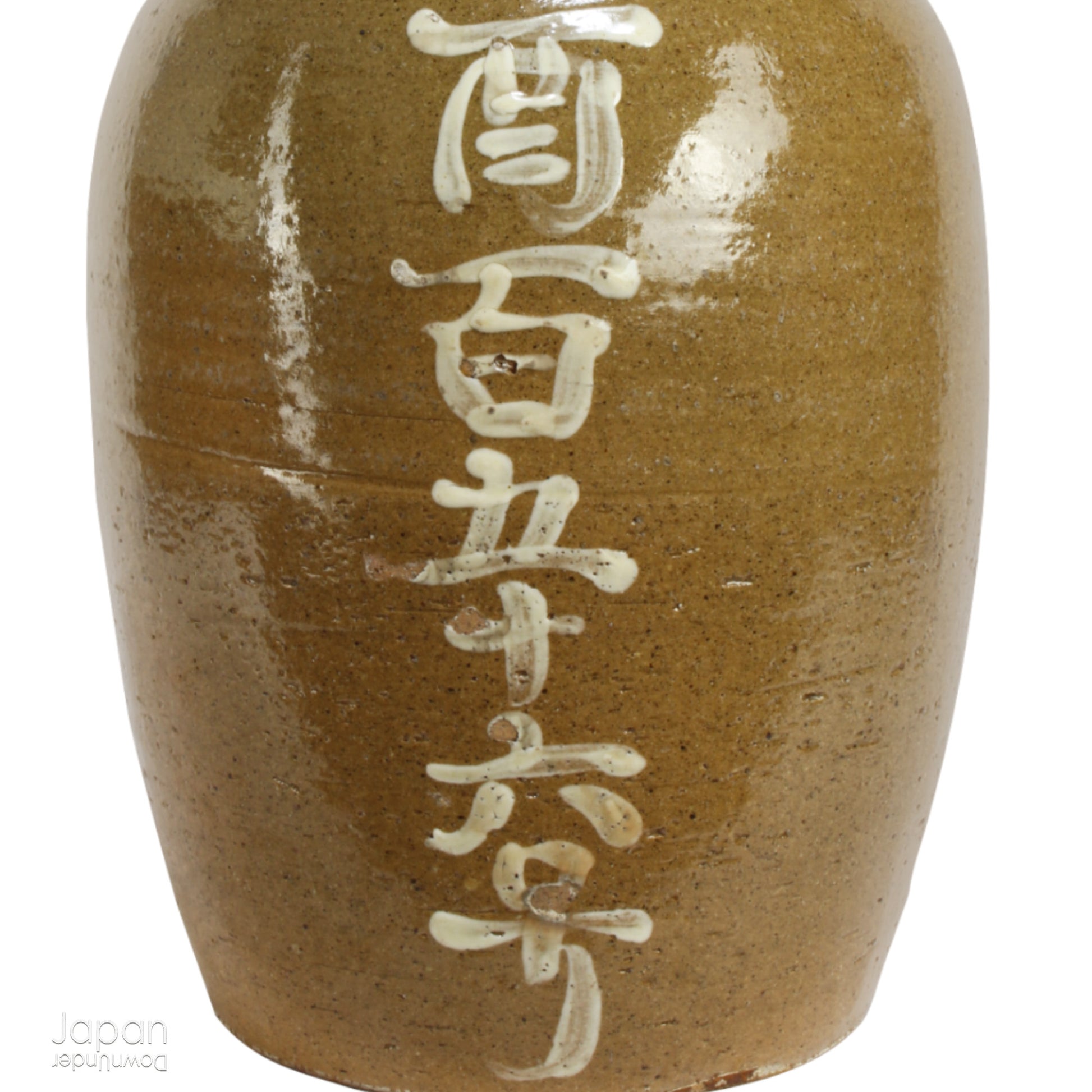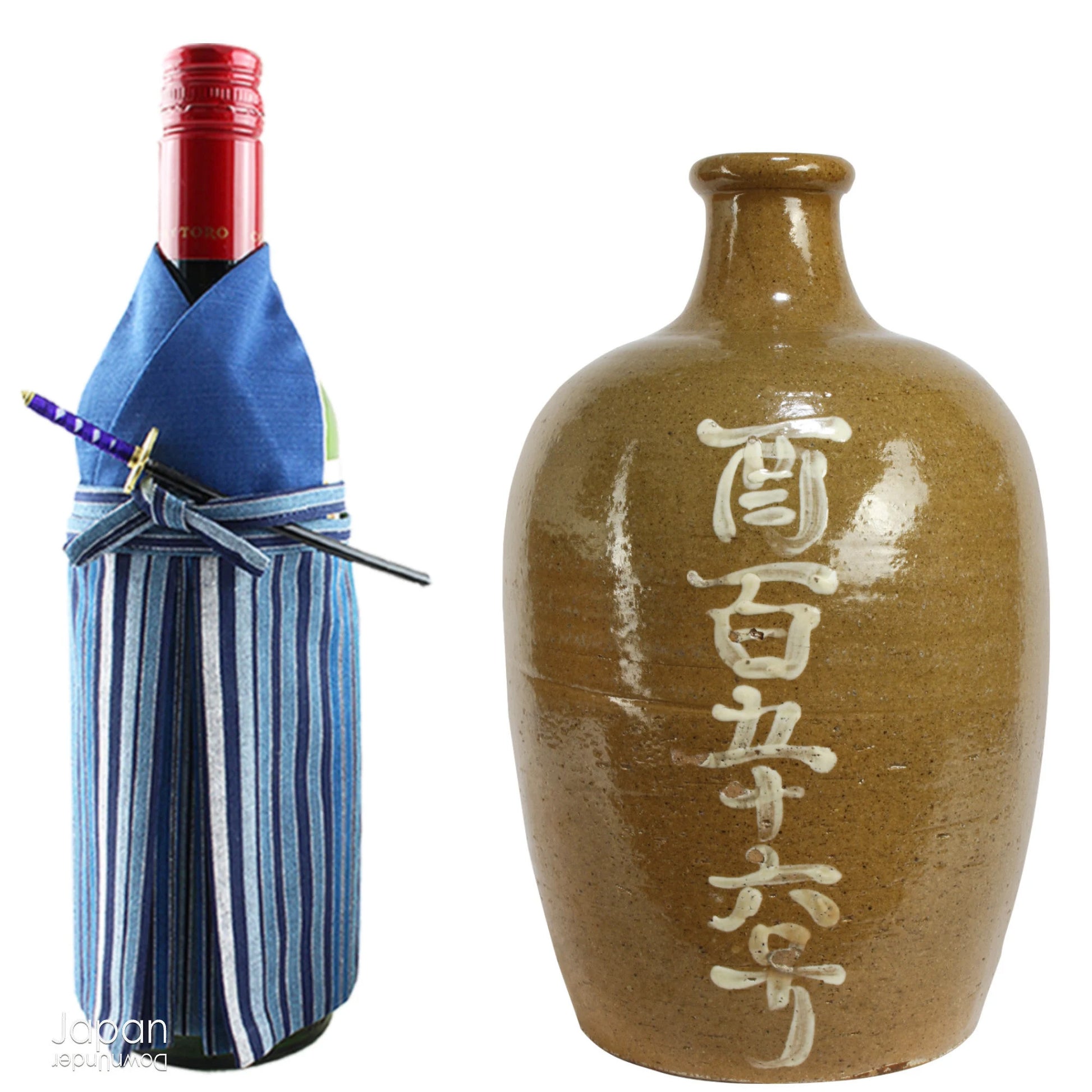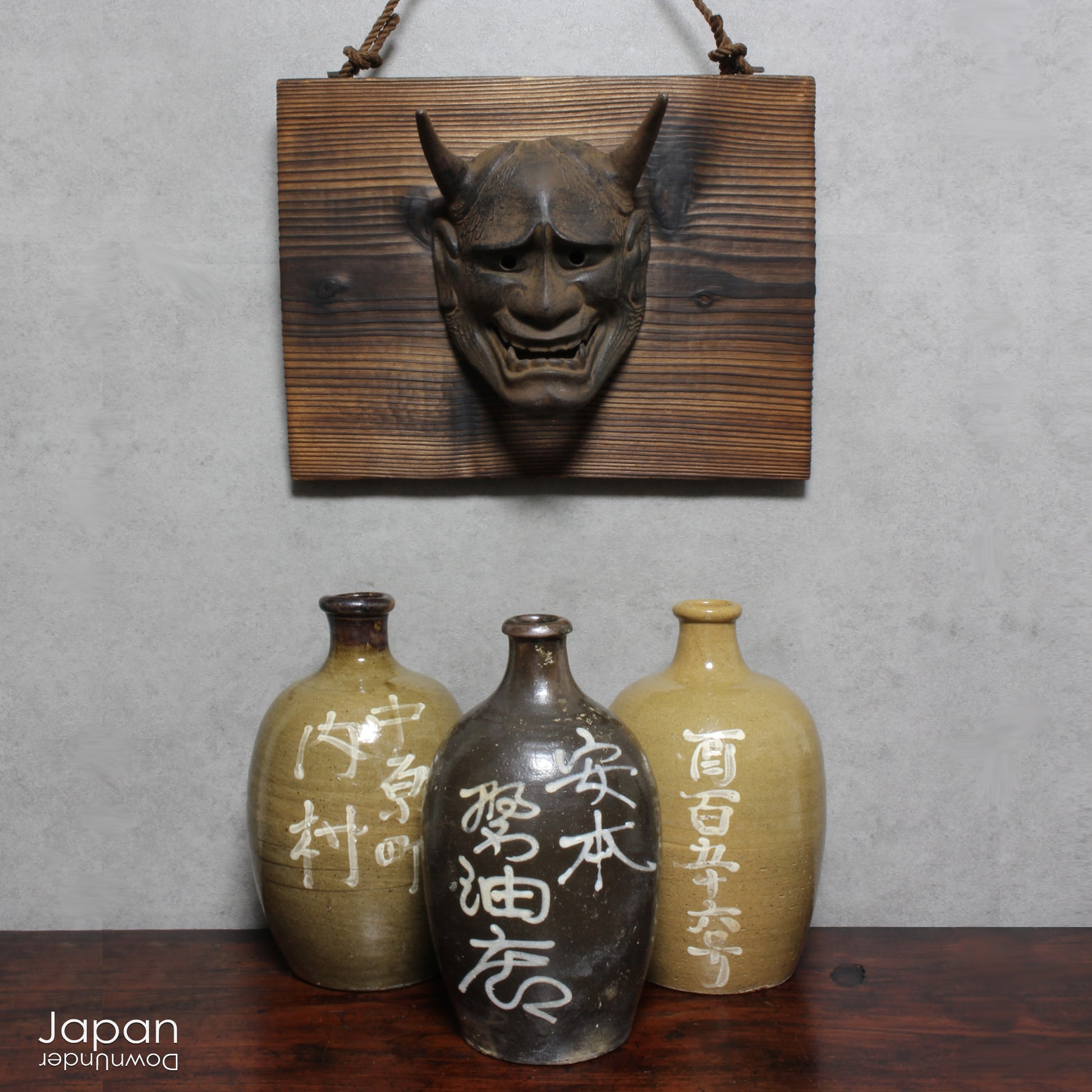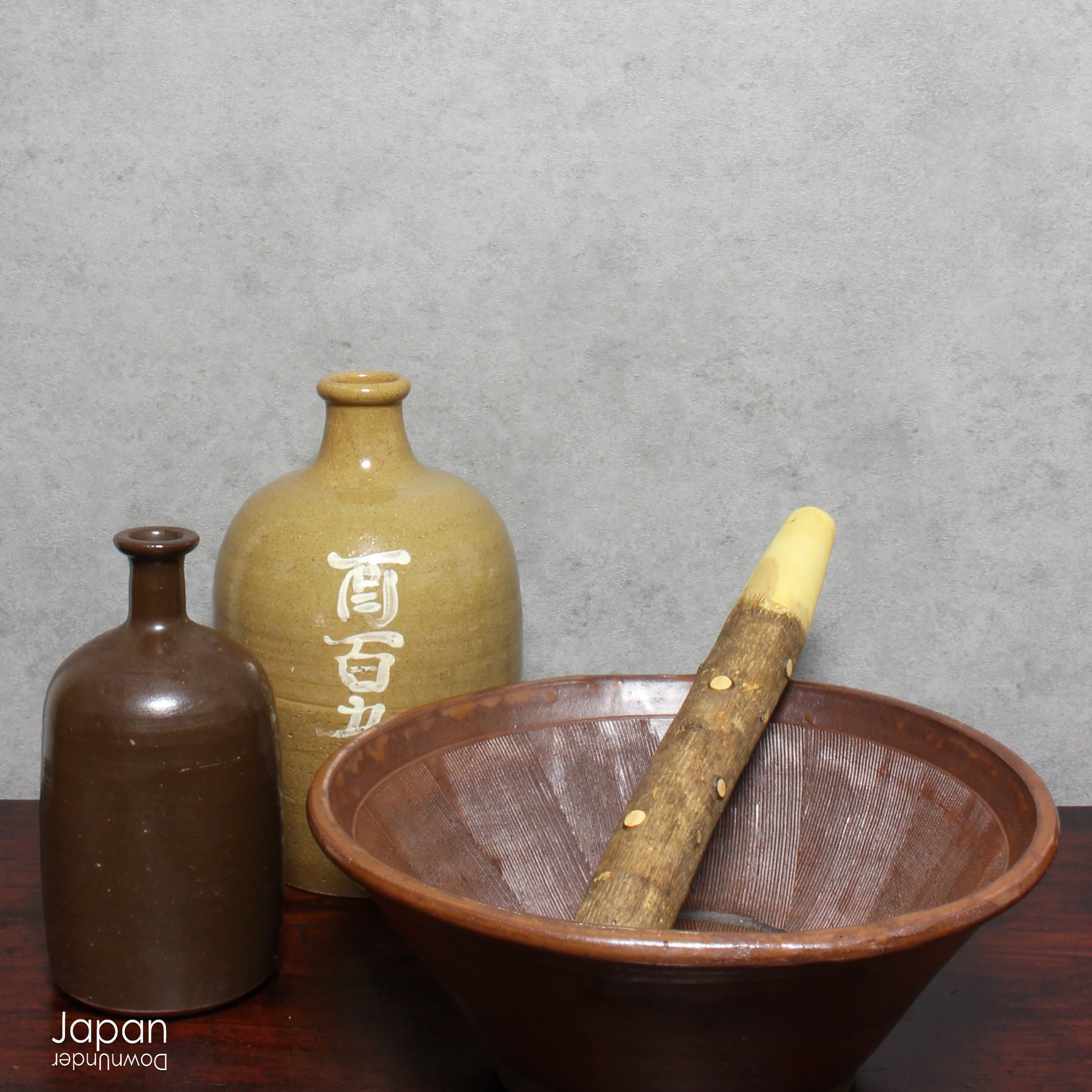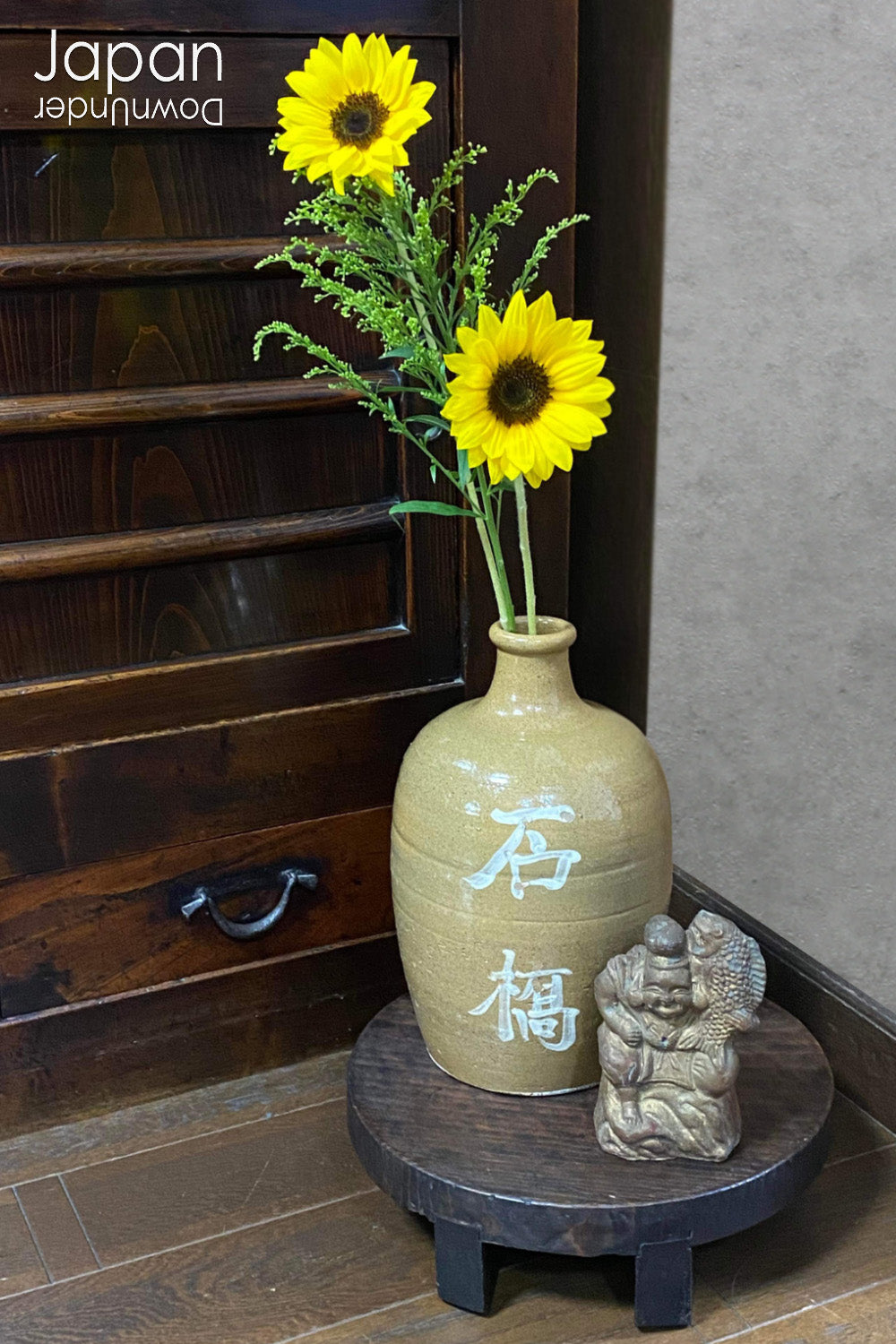JapanDownUnder
1900’s vintage stoneware sake jug - eco-friendly purchase and storage
1900’s vintage stoneware sake jug - eco-friendly purchase and storage
Couldn't load pickup availability
Love Japanese Style Like We Do
Uncover the charm and eco-conscious history of this 1900s vintage stoneware sake bottle, a one-of-a-kind treasure once used for both the purchase and storage of sake. Perfect for sake enthusiasts, collectors, or anyone looking to add a unique and sustainable piece to their collection, this bottle is a rare find that won’t last long!
Known as a Kayoi Tokkuri, this bottle was a part of a tradition that began in Japan during the Edo Period. It was a custom for liquor stores to lend these bottles to customers, allowing them to purchase sake and return the bottle once emptied for refills. This practice continued until 1923 when stoneware gave way to glass bottles. In Japanese, Kayou means to commute, and Tokkuri refers to the container used to carry sake back and forth from the shop - a beautifully eco-friendly system that was far ahead of its time!
Crafted from durable stoneware, this Kayoi Tokkuri boasts a sturdy, bulbous body with a graceful, slender neck. It is an authentic Otani ware piece from Ehime Prefecture, finished in a rich, glossy caramel hue. Bold white kanji lettering across the surface displays the liquor store’s name, brand, and address - imprinted with the rustic charm of its utilitarian past.
Made for daily use, this sake bottle was once considered a humble object. Its rough kiln work reflects its history as an everyday item, not a prized possession. However, the Mingei (folk art) movement, led by Soetsu Yanagi and potters like Shoji Hamada and Kanjiro Kawai, redefined the value of such objects in 1926. They saw beauty in the everyday, believing that true artistry lies in objects crafted by unknown hands, in harmony with nature. Today, this Kayoi Tokkuri is celebrated for its rustic, folk art appeal and timeless charm.
A larger size, this bottle makes a striking tabletop or floor vase, adding a touch of history and character to any space. Alternatively, it can stand proudly as a stunning piece of mingei folk art, perfect for your home or store. Don’t miss your chance to own this extraordinary piece of Japan’s cultural heritage.
- measures around 26 cm (10.2”) tall x 16 cm (6.3”) in diameter.
- weighs 1,310 gm.
(listing for sake bottle only)
SHIPPING INFORMATION
- please read our shipping notes in shipping policy.
- we use recycle packaging wherever possible and wrap for safety, rather than appearance!
ABOUT OUR VINTAGE, ANTIQUE AND OTHER ITEMS
We list pieces we feel are worthy of display. There may be scratches, dents, fading and signs of wear and tear. We try to explain the condition of each item exactly, but may miss something.
Information regarding the item and it’s age is obtained from dealers and our personal research. We do our best to give you the correct information but please be aware that we cannot guarantee this information.
Please message us prior to purchase with any questions you may have about our products.
KAYOI TOKKURI
From ancient times sake was regarded as a special beverage, made from precious rice. It was drunk, not only for its intoxicating and festive nature, but also as a symbol of purification and starting anew at religious ceremonies.
It is believed the first alcoholic beverage was made in the Yayoi period (300 BC - 250 AD). During the Nara period (710-794) sake was produced for the Imperial Court and during the Heian period (794-1185) sake was made by temples and shrines and home brewed in farming villages. Sake breweries started in the Muromachi period (1333-1573), together with the technology to make large wooden storage barrels. By the Edo period (1603-1868) sake manufacturing had become a thriving industry with techniques to improve the flavor and preserve the liquor.
It was during the Edo period that the custom of dispensing sake to regular customers, using the kayoi tokkuri became popular for liquor stores. The kayoi tokkuri was a sturdy stoneware or porcelain bottle with either a bulborous body or thinner cylindrical body and a long, thin neck. Written on the body of the bottles, in large Japanese script was the liquor store’s name and address, their brand of sake and trademark. The bottles were only lent to customers and sometimes ‘not for sale ‘ was also written.
Sake was shipped from breweries and sent to liquor stores through the wholesaler. Customers went to the liquor store to buy their sake returning home with a full bottle. Once the bottle was empty they went back to the shop where the kayoi tokkuri was once again filled. ‘Kayou’, actually means to commute and ‘tokkuri’ refers to the container, that was carried to and from the shop and customers home. At this time, stoneware Mino tokkuri were mainly used in Eastern Japan, and the use of Tamba-Tachikui stoneware and Arita porcelain ware spread in Western Japan.
At the beginning of the Meiji era the government revised its tax laws and sake tax greatly increased. In 1889 home brewing was completely banned with the idea that home brewers would have to buy their sake from liquor stores, thus increasing the amount of tax the government could collect. The kayoi tokkuri, often also known as the ‘bimbo tokkuri,’ (poor mans sake bottle), enabled people with not so much money to buy just the amount of the expensive sake they needed, as sake was sold by the weight.
With no other way to drink sake than to buy it, the demand for kayoi sake bottles increased. Kilns everywhere, well know for their rapid response to trends, soon started to produce more kayoi sake bottles enabled by the spread of improved railway networks, allowing their wares to be sent nation wide. There were Mino, Shigaraki, Tanba, Otani, Bizen, Tobe, Ushinoto and other tokkuri produced in Eastern Japan and Arita/Imari porcelain tokkuri produced in Kyushu.
Sadly, the kayoi tokkuri was replaced by a glass bottle after the Great Kanto Earthquake of 1923 and gradually disappeared. Looking at these old sake bottles now, we can imagine the lives of people in the past and the joy they must have had drinking with friends and family on festive occasions.
Share
